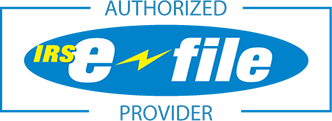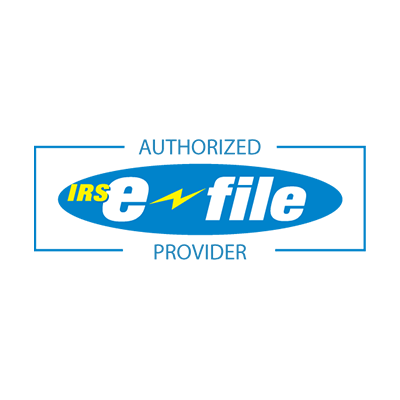Any trucker worth their road salt knows that it’s vital that you stay compliant with Department of Transportation (DOT) regulations in order to avoid potential fines, penalties, or any other consequences in the event of an audit or in a legal action. Should you have any areas of noncompliance, the first place they’ll surface is in a safety audit or compliance review. The Federal Motor Carrier Safety Administration (FMCSA) conducts these inspections to determine whether a commercial motor carrier or any other transportation entity is operating safely and in compliance with the applicable federal regulations.
If the DOT performs a safety audit or compliance review of your trucking operation, they’re going to examine six areas: driver files, equipment files, insurance, drug testing, hours of service (HOS), and hazmat inspections (for hazmat carriers). While DOT fines can be astronomical—the fine for a drug testing violation alone can be over $4k per employee—the much bigger risk noncompliance presents for your company is legal liability. You can usually negotiate fines and other disciplinary actions brought against you by the DOT, but if you allow noncompliance to flourish in your operations and an accident occurs as a result, it may be much more difficult to escape legal consequences.
So what do you need to do to meet DOT compliance requirements? In this article, we’ve put together a handy checklist to help you foster administrative compliance in your workplace. To help us determine exactly what this checklist should include, we spoke with Troy Thurgood, President, CEO, and Founder of Thurcorp, a trucking compliance consultancy that helps trucking companies achieve and maintain compliance.
When Will You Use this Checklist?
Ideally, you’ll always follow this checklist, but it will be especially important to consult during a safety audit or compliance review. A safety audit consists of a review of a new carrier’s safety data, a review of other carrier documents, and an interview with your safety official. This takes place during a minimum eighteen-month monitoring period after a carrier is issued a Provisional Certificate of Registration. Even if you follow safety regulations exactly, you must undergo and pass a safety audit within this period.
A compliance review, on the other hand, is similar to a safety audit, but more difficult, as the examination will be much more thorough. According to Mr. Thurgood, these reviews are typically not random. You will usually only be subjected to a compliance review if you’re in a serious accident, such as one resulting in a fatality, or if your safety score gets out of hand—if you have even one area that isn’t compliant, especially Hours of Service, you might be subject to a compliance review. Additionally, you might get tapped for a review if FMCSA receives a verifiable complaint.
The Six Areas of DOT Compliance
1. Driver Files
During a safety audit, the FMCSA auditor will check to make sure that you have several documents in your driver files. These include your employees’:
- Employment application (DOT specific form)
- A copy of each driver’s license or commercial driver’s license
- Medical card
- Pre-employment drug test and results
- Whether a query has been run through the clearing house for new hires, to ensure that there have been no prior positive drug tests, or refusals to test
In addition, an auditor may also check that:
- Drivers who carry double trailers or operate tank trailers have had a road test
- Hazmat carriers have a current hazmat endorsement
- Drivers have a clean motor vehicle record (MVR)
- You screened potential new hires using the pre-employment screening program (PSP). According to Mr. Thurgood, while it is not required to use PSP, it can reveal issues not recorded on an MVR, such as logbook or maintenance violations.
2. Equipment
For the sake of DOT compliance requirements, trucks and trailers are considered to be the exact same. For each vehicle, auditors will expect to see:
- A copy of current registration
- A current copy of your annual DOT inspection form
- Proof of your qualified inspector’s paperwork
- Record of any maintenance performed on your trucks. This can be as simple as a maintenance notebook in which maintenance is logged as it’s completed. However, in the event of a compliance review, auditors may ask for receipts to prove certain maintenance was actually performed.
- A maintenance plan. This plan doesn’t need to be complicated, as Mr. Thurgood explains. You simply need to prove that you’ve given this some consideration and that it’s being followed.
3. Insurance
To remain compliant with DOT requirements, you must be able to show proof of motor carrier insurance.
- If you have a current MCS-90 form, you’re good to go.
The minimum amount of non-hazmat for carriers is $750k. For most hazmats for hire, the minimum amount is $1M. For passenger carriers, the minimum amount is a $5M liability insurance.
4. Drug Testing
To be compliant in this area, you must have a drug testing agreement with a consortium or you must test your own drivers at minimum standards. You cannot test DOT-regulated drivers on a non-DOT panel. Even if drivers are tested on a more extensive panel than the 5-drug panel required by the DOT, it won’t count!
An auditor will want to see:
- Your drug testing policy, your consortium should provide
- The drivers in your drug test pool, also provided by your consortium
- The pool’s MIS report for the prior year, and possibly for the prior quarter or year to date
- Supervisors’ reasonable suspicion training certificate if they work directly with truck drivers. This is not required for owner/operators.
5. Hours of Service (HOS)
FMCSA takes HOS very seriously, so auditors are likely to spend a lot of time in this area. Specifically, this means they’ll want to look at your logbooks to make sure drivers aren’t violating any rules.
Auditors will ask for:
- The previous 30 days of logs for typically 1-10 drivers, depending on the size of your operation. If you have an ELD (electronic logging device), then you just have to transmit the ELD to them for that period. If you have an ELD exemption, then you’ll be expected to provide physical timecards or logbooks for that period.
- They’ll also ask for evidence of the log entries (such as receipts, bills of lading, possibly payroll records, etc.).
However, if you aren’t required to do a logbook then you won’t need to have an ELD, either. This applies if you haul within a 150 mile radius of your base and never leave that radius, and for farm operations within a 150 mile radius. Some states will also exempt logbooks for farm operations within a state during harvest season.
6. Hazmat Inspections on Tank Vehicles
If you aren’t a hazmat carrier, you can skip this section.
Tank vehicles hauling hazmat are required to have:
- Proof of hazmat inspections conducted per the hazmat regulations
- The ‘birth certificate’ of the tank, i.e., a manufacturer’s certification of origin, which outlines the specific information about that specific tank. If you don’t have one, you can call a manufacturer to obtain a copy, but, according to Mr. Thurgood, this can be a pretty difficult task! Maintaining good recordkeeping will save you time down the road.
Consequences of Noncompliance
So what happens if your operation is not found to align with DOT compliance requirements? Noncompliance could result in a fine, but you can get the fine reduced, or start a payment plan, if you show that you’re working to fix the area of noncompliance. If a company is too noncompliant, or is found to have caused a fatality, FMCSA could shut down the operation entirely, as well.
The biggest threat of noncompliance, though, isn’t what the DOT will do. Your biggest concern is actually the risk of liability in a court action, according to Mr. Thurgood. If you’re sued and taken to court, and it’s shown that your business has a history of noncompliance and regulation violations, a judge or jury in the suit could decide that you’re liable in the accident in question. This will result in you having to make a payout from your insurance. Your insurance provider might drop you as a result, which could end your company before the FMCSA even makes a decision.
Failing to meet DOT compliance requirements exposes you and your business to massive risks should an accident occur, so you always want to be able to clearly show you did everything by the books!
And Don’t Forget Your Form 2290!
Maintaining DOT compliance requirements calls for careful recordkeeping and attention to detail. But before you do anything, you need to make sure you’ve filed your Form 2290 and paid the HVUT to the IRS. With i2290, all you need to do is create an account, enter in basic information about your business and equipment, and our software will calculate your taxes for you automatically! The process only takes a few minutes, and then you can return to making sure all the other records required for your business are presented and accounted for, without having to worry about receiving your stamped Schedule 1.
Managing a trucking company can be administratively complicated, so why not take advantage of efficiency whenever possible. Create an account with i2290 today and simply your Form 2290 filing processes.
About Thurcorp
Thurcorp is a compliance consulting company that helps other trucking companies comply with the complex rules and regulations of the trucking industry. After two decades in the industry, Thurcorp has accumulated the necessary knowledge and expertise to help you navigate through every aspect of starting and operating a trucking business. Whether you need assistance with monitoring and reporting, maintenance and inspections, maintaining driver records, handling DOT requirements, or taking care of registrations and renewals, Thurcorp has the resources to help you in all of these areas, and so much more. Contact Thurcorp today to speak to your trucking compliance experts!
Special note: This article is for general purposes, and is not intended to provide, and should not be relied on for tax, legal, investment, or accounting advice. The best way to ensure you’re maintaining DOT compliance and paying appropriate taxes is by following IRS regulations and consulting with a professional.


